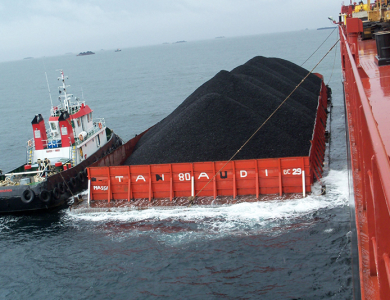Goods quality inspection
Quality Inspection Service: Concept, Process, and Practical Applications
In the globalized economy, product and service quality has become a decisive factor in the success or failure of businesses. Quality Inspection Service has emerged as an effective tool to help organizations and businesses ensure their products meet domestic and international standards. This article provides a comprehensive overview of quality inspection services, from basic concepts to practical applications in manufacturing and trade.
1. What is Quality Inspection?
1.1. Definition
Quality inspection is the process of examining and evaluating a quality management system or specific products to verify their compliance with established standards and technical regulations. This activity is typically conducted by independent inspection organizations or authorized regulatory agencies.
1.2. Types of Quality Inspections
-
Pre-Shipment Inspection (PSI)
-
During Production Inspection (DPI)
-
Container Loading Inspection
-
Laboratory Testing
2. The Role and Importance of Quality Inspection
2.1. For Businesses
-
Ensures products meet quality standards before reaching consumers
-
Reduces risks of complaints and product recalls
-
Enhances brand reputation in the market
-
Optimizes production processes and minimizes material waste
2.2. For Consumers
-
Ensures access to safe, high-quality products
-
Protects legitimate rights when purchasing goods
-
Builds trust in brands and manufacturers
2.3. For the Economy
-
Improves national competitiveness
-
Facilitates international trade
-
Protects the environment through green standards
3. Standard Quality Inspection Process
3.1. Preparation Phase
-
Determine inspection standards (ISO, ASTM, JIS, etc.)
-
Develop a detailed inspection plan
-
Prepare measuring equipment and inspection tools
3.2. Conducting the Inspection
3.2.1. Visual Inspection:
-
Check packaging and labeling
-
Inspect shape, color, and dimensions
3.2.2. Technical Inspection:
-
Measure technical parameters
-
Test product functionality
-
Analyze components (if required)
3.2.3. Quality Management System Evaluation:
-
Review production processes
-
Assess internal control systems
3.3. Reporting Results
-
Summarize findings
-
Recommend improvements (if necessary)
-
Issue quality certification
4. Common Quality Standards
4.1. International Standards
-
ISO 9001: Quality management system
-
ISO 14001: Environmental management
-
CE Marking: European standards
-
FDA: U.S. food and pharmaceutical standards
4.2. National Standards
-
TCVN: Vietnamese standards
-
QCVN: National technical regulations
-
JIS: Japanese standards
-
GOST: Russian standards
5. Practical Applications in Key Industries
5.1. Food Industry
-
Food safety and hygiene inspection
-
Nutritional composition analysis
-
Production process control
5.2. Textile Industry
-
Colorfastness testing
-
Fabric quality assessment
-
Product specification control
5.3. Electronics Industry
-
Electrical safety testing
-
Water and dust resistance checks
-
Product lifespan evaluation
5.4. Construction & Building Materials
-
Concrete strength testing
-
Steel quality assessment
-
Input material control
6. Reputable Quality Inspection Organizations
6.1. International Organizations
-
SGS (Switzerland)
-
Bureau Veritas (France)
-
Intertek (UK)
-
TÜV (Germany)
6.2. Domestic Organizations
-
QUATEST (Vietnam Standards and Quality Center)
-
Vinacontrol
-
Vietcert
7. Cost and Time of Inspection
7.1. Factors Affecting Cost
-
Product type
-
Number of inspection criteria
-
Process complexity
-
Inspection location
7.2. Execution Time
-
3-7 working days for basic inspections
-
7-14 days for complex lab tests
8. Future Trends in Quality Inspection Services
8.1. Industry 4.0 Applications
-
AI for quality analysis
-
Blockchain for traceability
-
Automated inspection equipment
8.2. Green and Sustainable Standards
-
Increased focus on eco-friendly products
-
Development of ESG (Environmental, Social, Governance) standards
8.3. Remote Inspection Services
-
Online inspections via video calls
-
Integrated electronic reporting systems
Quality inspection services are increasingly proving their importance in the global supply chain. For businesses, they are not just a mandatory requirement for exports but also a tool to enhance competitiveness. Choosing a reputable inspection provider and applying international standards will help businesses expand their markets, build customer trust, and achieve sustainable growth.
Businesses should proactively research and adopt quality inspection services as an essential part of their product development and branding strategies.
 Email: surveyor.oceanhigh@osivietnam.com
Email: surveyor.oceanhigh@osivietnam.com
 Hotline:
Hotline: 





